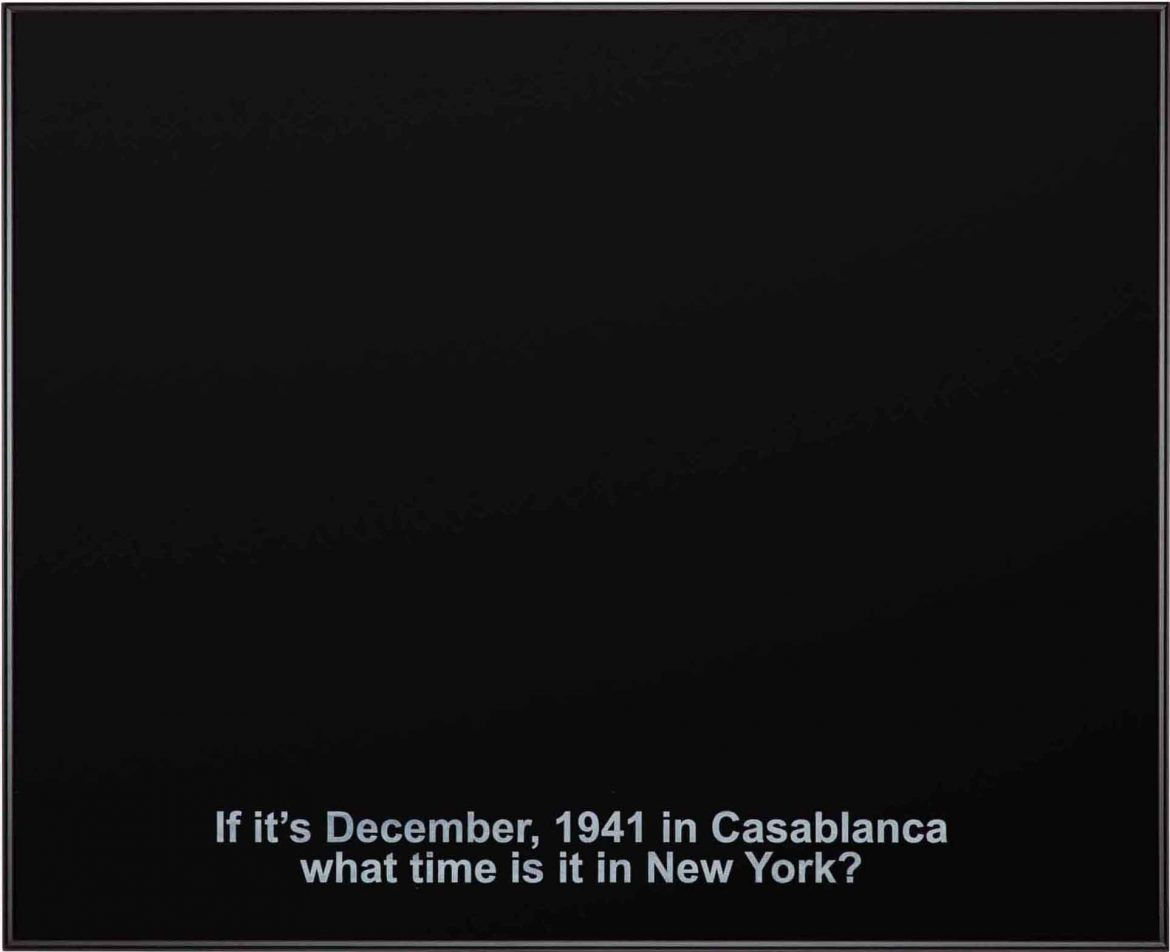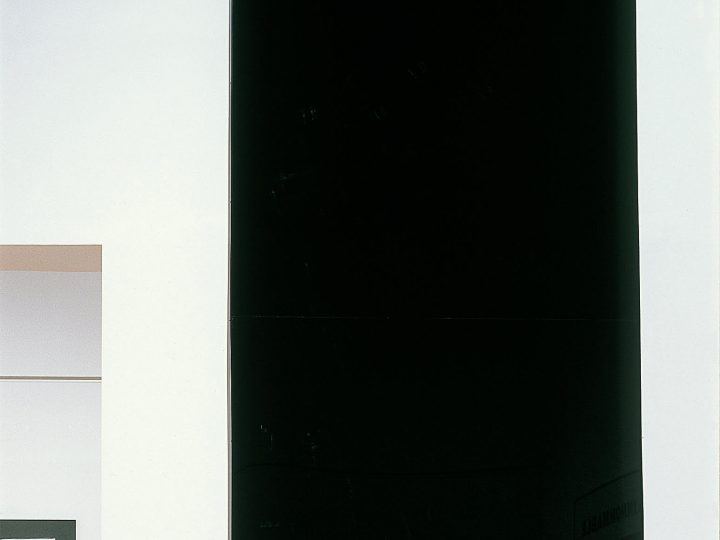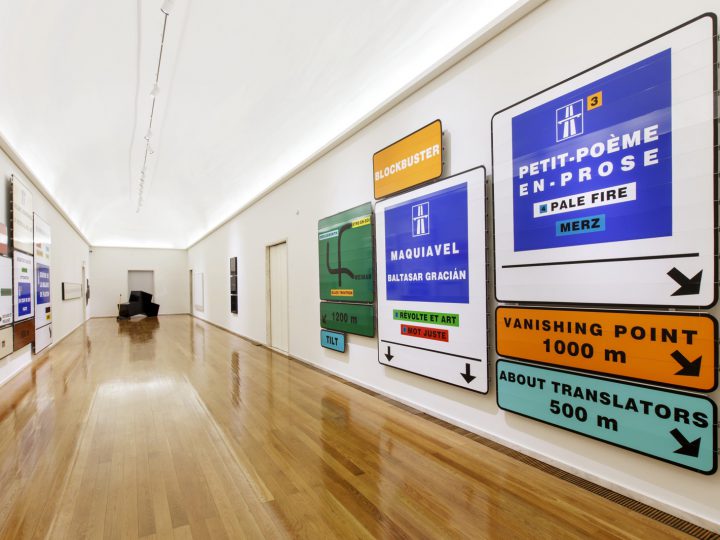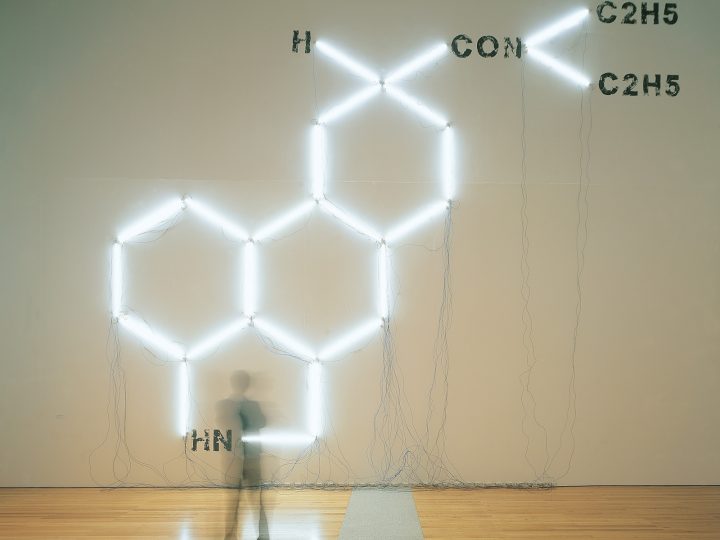
Mar 28
João,
I would like to start this interview with a thought that occurred to me in these days in Italy.
It is related with four words, their meanings and their translations between Italian and Portuguese: ‘leggenda’, ‘legenda’ ‘titolo’ e sottotitolo’.
In Italian the subtitles (‘legendas’ in Portuguese) are called ‘sottotitoli’ (something which is under, underneath the title) and the word ‘leggenda’ means legend (‘lenda’ in Portuguese). Also ‘legenda’ means the graphic signs that allow us to read a map.
These linguistic confusions and their respective meanings suggest that a ‘leggenda’ can be a legend, or something that attaches itself to a certain title, and that there is an osmosis between the imposition of meaning given by the words and its fluidity in the imaginary field.
Thinking about your Blind Images, do you think that this confusion of words and of concepts (‘legend’, ‘legenda’, ‘title’, what is underneath the title) can, in any way, be analysed and solved through the absence?
Mar 28, 2006 2:21 PM
The question you are putting is, first of all, from the universe of translation. And it is in that sense that we should think. It is obvious that often, when we look at words that have a common origin and that had a different evolution in other cultures, this make us think how words are elastic and how a little difference in their use implies big transformations in the future. But this also reveals its potential… if, one day, we will be able to break a word, we can have a chain of nuclear reactions.
A word is a very dangerous material.
Concerning absence, it isn’t directly concerned with the problems of translation. When you state that absence could calm down the confusion produced by the shock of words and of concepts, you refer to the confusion made when we jump from one culture to the other. In that sense, I don’t think so. This linguistic jump shouldn’t be done, or we might be running after a shadow, which turns into a ghost. It is curious to reflect about ‘esperanto’, a language that intended to unify and, as it was seen, never had success.
Such as the crossing of different species is impossible, the same thing happens in language. The words have genetic codes that are impossible to overlap.
It is obvious that we can only verbalize inside the universe of language. Even when we speak about absence we need to convoke a word to produce an image. And when we only have the image, even an absence, we need words to define it… this means that we are attached to man’s biggest invention ever, an endless source of meaning and of pleasure, which, however is also the cause of conflicts: as an Italian philosopher says, the word is also one of the biggest reasons for man’s misunderstanding…
Mar 28, 2006 11:37 PM
Joao,
Three quotes came to my mind while I was reading your answer, two of them from Ludwig Wittgenstein and the other one from Douglas Huebler, an artist I deeply admire.
I thought that, in a certain way, they could be connected to what you were saying before: on one side to our impossible escape from language and, on the other, to my reference to absence.
Being so, and still referring to your Blind Images, I would like to depart from these sentences, which have little in common:
Whereof one cannot speak, thereof one must be silent. (L. Wittgenstein)
Don’t ask for the meaning, ask for the use (one of the most beloved sentences by structural linguistics!) (L. Wittgenstein)
The world is full of objects, more or less interesting; I do not wish to add any more.
I prefer, simply, to state the existence of things in terms of time and/or place.
(D. Huebler)
Don’t you think that, by ‘hiding’ an image and giving it a sentence, you are, in a certain way, (re)giving it an almost iconic power, this is, creating a much more powerful and working image?
Apr 1, 2006 3:40 PM
When I read the sentences you sent me, there were some corrections that immediately came to my mind, which are more like new compositions, adding complexity:
“Don’t ask for the meaning, ask for the abuse”.
With this “abuse” we are placed in front a new family of consequences which, in an upside-down world, we can only have the opportunity to see from reverse. This double negation (a mathematical one) teach us: truth is equal to a double-negation (P=~~P). So, and according to your words, here the “seeing”, means to see what is “hidden”.
“Whereof one cannot speak, thereof one must be seeing”.
This “seeing” throw us the in drunkenness of gaze, which also means that this “seeing” can save us from the trap language itself creates around us, with inductions, fake things, superstitions, rumours and that it gets to that impossibility Wittgenstein talks about. Jumping outside language is an experience… and now I can’t use any adjective (word). Here I should be in silence:
Homage a Ludwig Wittgenstein.
The third sentence you sent seems to be from a different family of questions. On one side there is the issue of the entropy in the world. The raise of objects that (such as the raise of images in the world and its uncontrollable multiplication) raises the chaos (the entropy). That is why I consider enough the collection of images each one of us has. That collection allows us to recognise the world or to establish reports in its peculiarities. When I talk about Brigitte Bardot, each viewer forms a different image, even if it is the same person we are all thinking about.
On the other hand this sentence refers to the Zietgeist, to ‘being here and now’, to what still lacks of critical distance… to what still emerges without profiles. This seems to be one of the most important features of an artist, what ends up by defining it. This is, to be able to see, “seeing” once again, beyond the shape, giving it at the same time the power to convoke. Art is that object which convokes and talks about its time through artists.
But still without the critical distance we were talking about. In this sense, art anticipates all the rest and goes on the front. It is this the meaning of avant-garde. It is this capacity that makes one artist better than the other.
As a conclusion, I would say that the iconic power of the un-existing image you referred to, is, on the first hand, a way of revising and recovering images from the existing visual material. I share this visual material with the viewer and he, through his collection (a sentimental or a documental one) concludes the presented work.
This strategy assures that the viewer’s contribute is a really effective one. He can’t simply contemplate the work: he gets involved and projected in it.
This will activate an important consequence in my work, thus allowing a break with the semiotic circularity in which the work of art is still, ‘after all these years’, closed in: the romantic paradigm.
Assuring that the work gets uncompleted to each one of the viewers is one of my objectives. And it is a privilege when the spectator is the one who completes it.
Apr 3, 2006 1:14 PM
I would like to depart, once again, from your sentences, specially the last ones, which make me think both about Eco and his ‘Opera Aperta’ and Barthes’ texts. However, beyond these ultra-used issues, there was something you didn’t referred to: the viewer, in contact with your Blind Images, doesn’t only project in them what he knows but he also sees himself projected in them (in the sense that he sees himself reflected and sees his image captured inside the field of the work). By replacing the ‘true’ image (the hidden one) by the image of the viewer, are you underlying this relation between what we see and by the way in which what we see is conditioned by our cultural ‘baggage’, which determines our lecture and interpretation?
Is not so that what we are really ‘seeing’ is nothing but a reflection of ourselves, body, image and mind?
Apr 5, 2006 5:36 PM
This question you are raising would be, sooner or later, brought into discussion.
In reality, one of the issues that the Blind Images explore is that reflection. In that reflection, which isn’t only human, we can associate the subtitle to the image we see reflected, when we’re outside the vision field we can observe a viewer or a space, or both; or even us as actors of the action. This kinetic capacity of the work which Paulo Herkenhoff defined as a vortex, a black hole that absorbs everything but that sends it back again, creates a strange action, similar to the effect produced by a train, in which everything seems to be moving in front of us but it’s us who are moving in a static landscape. In this sense the work is available. Needing interpretation…
There are, therefore, these two testimonies: the first one given by the subtitle, which is autonomous, without a presence and the second on given by the reflection, which brings new elements and complexes the work.
The presence of the viewer is one of the variances in this process. This vortex is more powerful than we are and it re-dimensions us. We are no longer the beings in direction of the centre but falling, to any periphery.
www.neromagazine.it/magazine/index.php?c=articolo&id=120&idnum=15&num=9



